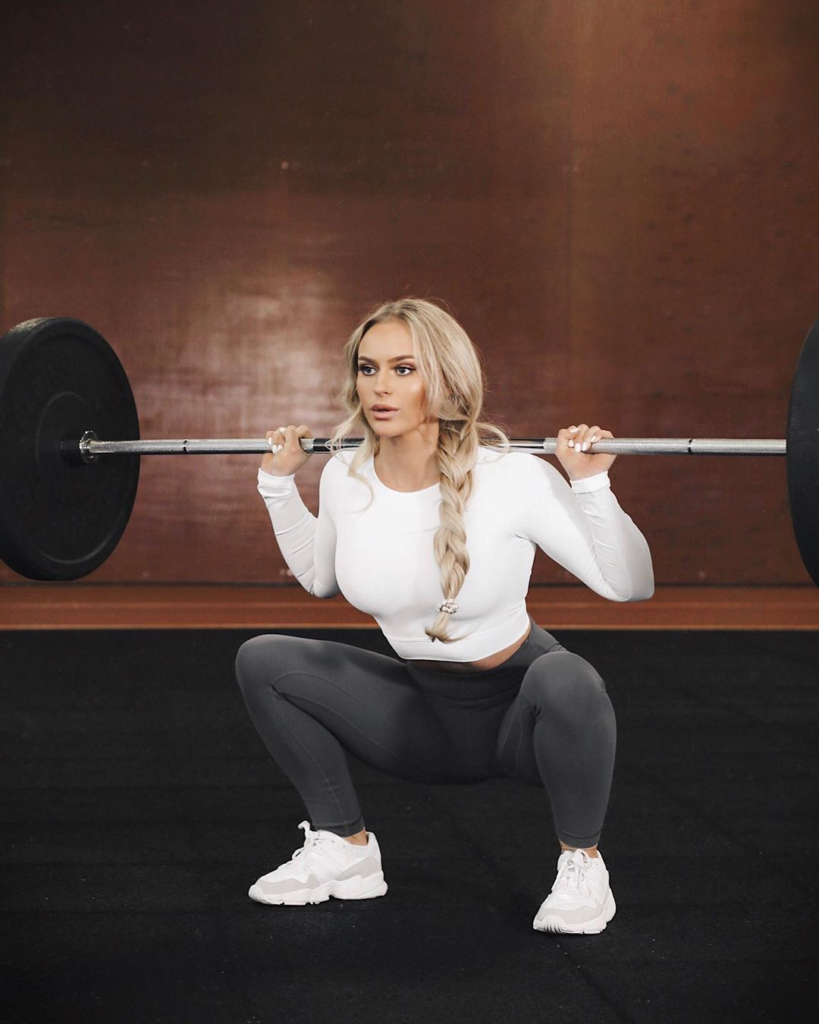
“Ideally you should squat to below parallel while maintaining a neutral spine.”
A good deep squat is very healthy for your knees and also recruits the hamstrings and glutes far better than a partial range squat does. However, most people lack the mobility and flexibility necessary to sink a squat a few inches below parallel without rounding their lumbar spine (lower back). How Deep Should You Squat?
Ideally you should squat to below parallel while maintaining a neutral spine. A good deep squat is very healthy for your knees and also recruits the hamstrings and glutes far better than a partial range squat does. However, most people lack the mobility and flexibility necessary to sink a squat a few inches below parallel without rounding their lumbar spine (lower back). When you allow repeated spinal flexion under the heavy load of a squat you’re asking for problems. In fact it’s one of the best ways I know to eventually suffer some type of disc injury. My solution for you is this:Squat as low as you can while maintaining proper technique/posture. This may be just at parallel or it may be a couple of inches above. Continue to do that while also working on your mobility and improving your range of motion. Two things to remember that will help you get a little deeper are to actively pull yourself into the hole with your hip flexors instead of just yielding to gravity. Secondly, remember that squatting takes place between the knees and not over them. My thanks to Pavel and Dan John for those two excellent coaching cues.After hitting your big barbell squat to right around parallel you’ll want to add in an assistance exercise to get that deep knee bend, full squat position.So do a few sets of 6-10 reps on an exercise that doesn’t load the spine and will allow you to do that. This could be any of the following:• Single leg squats• High step ups• Pistol squats• Goblet squats• Kettlbell front squats• Weight vest squats
Does Everyone Need Full Range of Motion? Quite simply, no. If you’re a sprinter you will never really need the strength in that deep, full range position. The great Charlie Francis had his sprinters do half squats and reverse leg presses (for glutes and hamstrings).That obviously worked out quite well and was all they needed. Would pistol squats have made them faster? I highly doubt it.If you’re a mixed martial artist, on the other hand, you could benefit tremendously from training the deep knee bend position as it is more specific to your sport and the situations you will find yourself in where you will need that strength. So for this type of athlete I would recommend the inclusion of a deep knee bend as an assistance exercise after their squats.
What About Non Athletes? If you aren’t an athlete I still believe that training the deep knee bend position is beneficial and will result in healthier knees. The knee was made and meant to full squat. We spend the first nine months of our lives in the full squat position and do it all the time as infants. So it’s quite natural and the ability to do it should be maintained throughout our lives. But this is only applicable to those that already have healthy knees. Unfortunately, most of us have lost the ability to full squat due to our sedentary lifestyles and a variety of other factors. If your knees are already damaged you may not be able to go below parallel without pain, nor would I recommend it. Unless you are a powerlifter there is no reason to freak out if you can’t get below parallel on any type of squatting variation.Take your time and work into it. It may take weeks or even years, but be patient and don’t risk an unnecessary injury. Squatting slightly above parallel, as Charlie Francis’s athletes did, will still provide tremendous benefit, even though it wouldn’t count at a powerlifting meet or on a gym record board. There are plenty of people who simply aren’t built to squat and will never be able to break parallel without some kind of lumbar flexion no matter what they do. If that means you can only get to two inches above parallel that’s fine. Better to be a little high and safe than break parallel and your back in the process. Work the assistance exercises for the full range strength if it’ something you need and can tolerate.
Strengthen Your Hamstrings One thing I have found over the years is that a lot of people who complain of pain on deep knee bend and single leg exercises can alleviate their suffering a bit by strengthening their hamstrings. If you can back squat without pain but can hardly get through a set of split squats without wincing try focusing on your hamstrings, and glute ham raises in particular for the next eight weeks.Start every lower body session with glute ham raises before you do any type of squat or single leg exercise. As the hamstrings come up the pain often decreases. The other benefit of this is that the glute hams will warm up the knee and pump up the hamstrings a bit which will also make the deep knee bend exercises a bit more tolerable.
Hopefully that all makes sense and you picked up a useful tip or two.

I’m glad you didn’t mention those stupid hip thrusters.